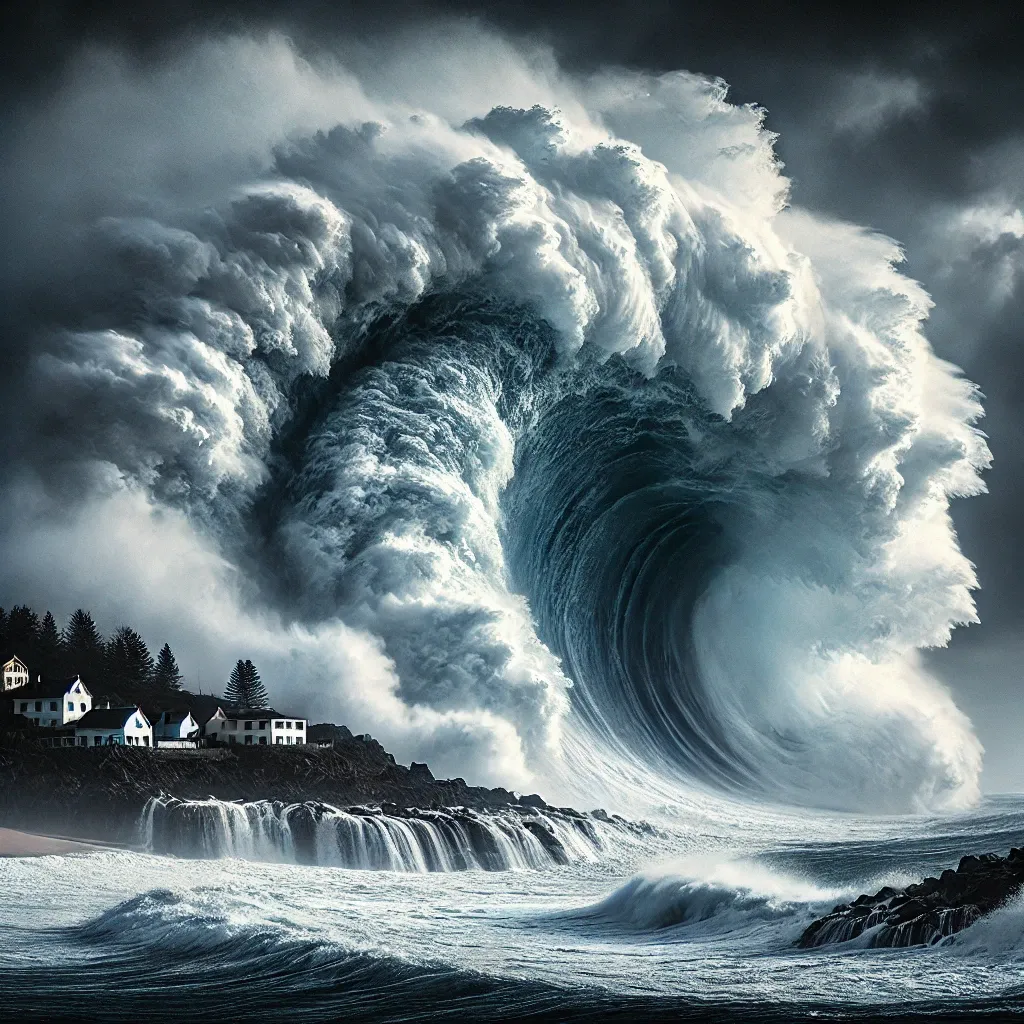Have you ever wondered what makes a tsunami so devastating? Or how it differs from other oceanic disasters? Explore the fascinating science behind tsunamis, the situation in Korea, and even an unexpected connection to red wine! This article uncovers all.
Tsunami: Nature’s Wrath Unleashed
A tsunami is one of the most powerful and terrifying natural disasters that can strike coastal areas. It’s important to understand that a tsunami is not just a giant wave, but a series of waves that are triggered by significant underwater events. Most commonly, these events include undersea earthquakes, volcanic eruptions, or underwater landslides. Unlike regular waves created by wind, a tsunami involves a massive displacement of water, often traveling across entire ocean basins.
Here are the key characteristics of a tsunami:
-
Massive Displacement of Water: A tsunami is typically caused by a large disturbance beneath the ocean’s surface, resulting in a massive displacement of water that travels outward in all directions.
-
Speed and Reach: Tsunami waves can travel at speeds of up to 500 miles per hour (800 kilometers per hour) across the ocean. Even if the waves are not very tall in deep water, they can reach devastating heights once they approach land.
-
Wave Period: Unlike regular waves, which have a short period (typically less than 20 seconds), tsunami waves have long intervals between them, sometimes 30 minutes or more. This can cause multiple waves to hit the same coastline in succession, increasing the devastation.
-
Destructive Power: The height and force of a tsunami’s waves can cause catastrophic damage to coastal structures, displace entire communities, and even wipe out entire towns. The waves are capable of traveling across vast distances, making tsunamis a global concern.
-
Warning Systems: Some regions prone to tsunamis have developed early warning systems that can give residents a brief period to evacuate before the waves strike.
Real-World Example:
The 2004 Indian Ocean tsunami is one of the most devastating examples. Triggered by a massive undersea earthquake, the tsunami struck multiple countries, causing over 230,000 fatalities. The waves traveled across the Indian Ocean, reaching as far as the eastern coast of Africa. The tragedy highlighted the need for effective warning systems and international cooperation in disaster response.
Tsunami Korea: Risk and Preparedness
When thinking about tsunamis, it’s easy to assume they only impact the Pacific Ocean’s “Ring of Fire” or the Indian Ocean. However, even countries like Korea are not immune to the risk of a tsunami.
South Korea, located on the eastern side of the Korean Peninsula, faces potential tsunami threats primarily from nearby seismic activity in the Pacific Ocean. The most significant threat arises from large earthquakes off the coast of Japan, which could trigger tsunamis that travel toward the Korean coastline. While Korea’s tsunamic risks are less frequent compared to regions like Japan, the country is still vulnerable to such natural disasters.
Key points about tsunami risk in Korea:
-
Seismic Activity in the Pacific: While Korea itself does not experience frequent earthquakes, its proximity to Japan makes it vulnerable to tsunamis triggered by seismic activity in the Pacific Ocean.
-
Historical Events: Historically, Korea has experienced the effects of tsunamis, although not as frequently as Japan. One notable example occurred in 1498 when a large earthquake in Japan caused waves that reached the Korean coast.
-
Preparation and Awareness: South Korea has taken proactive measures to educate the public about tsunami risks. This includes early warning systems, evacuation plans, and regular drills to ensure residents are prepared in the event of a tsunami.
-
Government Initiatives: The Korean government collaborates with neighboring countries to improve tsunami monitoring and response systems. There is also ongoing research into strengthening infrastructure to withstand potential tsunamis.
-
Public Awareness Campaigns: Efforts to raise awareness about the tsunami threat include educational campaigns, community outreach programs, and the distribution of tsunami warning information.
Example of Preparedness:
In 2011, following the devastating tsunami in Japan, South Korea implemented an updated disaster management plan that included tsunami drills and the installation of better warning systems, ensuring faster evacuation times for coastal residents.
Tsunami Red Wine: An Unexpected Connection
While the term “tsunami” is most commonly associated with oceanic waves, it has also been used in other contexts, such as the naming of products. One intriguing example is Tsunami Red Wine. Named after the powerful natural phenomenon, Tsunami Red Wine captures the boldness and complexity of the waves in its flavor profile.
Here’s what you need to know about Tsunami Red Wine:
-
The Name’s Origin: The wine’s name draws inspiration from the raw, overwhelming energy of the ocean, aiming to offer a bold experience that parallels the intensity of a tsunami.
-
Flavor Profile: Tsunami Red Wine is known for its rich, full-bodied flavor, often with notes of dark fruits like blackberry, plum, and cherry. The wine is typically aged in oak barrels, giving it a smooth, velvety texture with hints of vanilla and spice.
-
Price Range: Tsunami Red Wine can be found in a variety of price points, with options ranging from affordable bottles to more premium selections. The pricing is often determined by factors such as the wine’s origin, vintage, and quality.
-
Popular Pairings: Tsunami Red Wine pairs excellently with hearty dishes like steak, lamb, or roasted vegetables. Its bold profile also complements rich cheeses like brie or blue cheese.
-
The SNM100 and SNM200 Varieties: Two specific types of Tsunami Red Wine, the SNM100 and SNM200, are often highlighted for their exceptional quality and distinct characteristics. The SNM100 is known for its smoother finish, while the SNM200 offers a more intense and complex flavor.
Real-World Example:
I had the chance to try Tsunami SNM100 during a dinner gathering, and its rich berry flavors paired beautifully with grilled lamb. The wine’s smooth finish left a lasting impression, making it a memorable experience. It truly lives up to the powerful name it carries.
Conclusion
In conclusion, tsunamis are powerful natural disasters that can cause widespread devastation. Understanding their behavior, risks, and the measures taken to mitigate their impact is crucial, especially in regions like Korea that may not face frequent tsunamis but are still vulnerable. Additionally, the unexpected use of the name “tsunami” in products like red wine offers an interesting connection, demonstrating how this powerful natural force can leave a lasting impact in ways beyond just its destructive power.
By examining these different aspects, we gain a fuller appreciation of both the natural disaster and the cultural influence it has had. As always, being prepared and informed is key to minimizing the impact of such events, both in real-world scenarios and in everyday life.






